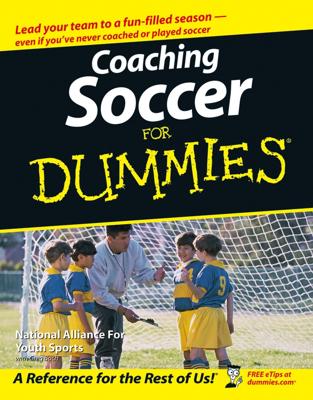Formations are the way a soccer team lines up its defense, midfield, and forward line at the beginning of the match. If you want to get technical, you could produce dozens of formations due to the mathematical possibilities and new ways coaches are trying to devise to play the game.
Soccer is a fluid game where a midfielder may become a forward for five or ten minutes and then return to his original position. Or, likewise, a forward can come back to defend.
When talking about formations, defenders are listed first and then midfielders and forward. For example, a 4-4-2 formation has four defenders, four midfielders, and two forwards. Goalkeepers are not counted because they are the one position that has not changed over the years.
Just remember, the best coaches aren't necessarily ones who devise the best formations, but rather are the ones who devise the best formation for their team to accentuate its strengths and to hide its weaknesses.
Youth soccer
In youth soccer, coaches should not introduce tactics until players have truly learned the game — usually around the age of 14. Players need time to develop, breathe, and have fun.
For the beginner, soccer starts out nearly the same. All the players run after the ball or the player with the ball, like bees after honey. Slowly, but surely, they learn to find their own space and spread out across the field.
The 4-4-2
England used the 4-4-2 formation (see Figure 1) en route to securing its first and only World Cup title in 1966. A forward is moved into the midfield, putting a lot more pressure on the two players up front to score goals. Saying that, the 4-4-2 is one of the preferred formations of today's modern game. The theory in using another player in the midfield is that it bottles up the opposition in the midfield before they can get to the attacking third.
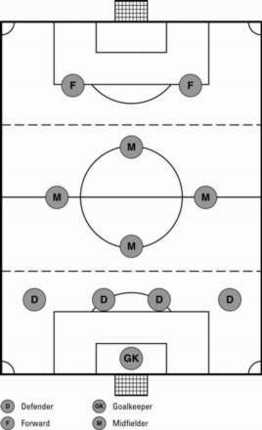 |
Figure 1: The 4-4-2 formation. |
This formation is a long shot to use consistently and successfully today because most coaches prefer to use five or even six players in the midfield.
The 4-3-3
Many North American Soccer League teams used the 4-3-3 formation (see Figure 2) in the 1970s, moving one midfielder up to the forward position. Everything is relative. This formation, which utilized a sweeper (free safety), was considered more defensive than the 4-2-4. But compared to today's more cautious approach, the 4-3-3 would be considered an attacking formation in some quarters.
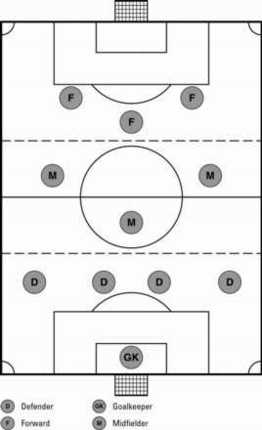 |
Figure 2: The 4-3-3 formation. |
The 4-2-4
The 4-2-4 formation (see Figure 3) is the most offensive-minded in modern times. The 1958 world champions of Brazil, with 17-year-old Pelé, made this strategy famous and made it work. To take advantage of this formation, you must have talented and skillful midfielders and forwards to strike early and hold the ball for long periods of time because the pressure is on the midfield and defense big time when the opposition possesses the ball.
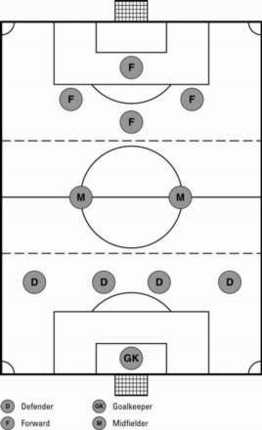 |
Figure 3: The 4-2-4 formation. |
The 3-5-2
Today's game is won or lost in the midfield, which is why the 3-5-2 formation (see Figure 4) is popular. A team that doesn't have its midfield operating at peak efficiency suffers in ball possession and scoring chances. So, many coaches like to use as many as five midfielders, although two outside midfielders may have more defensive responsibilities than their mates.
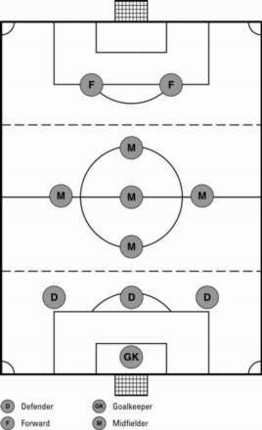 |
Figure 4: The 3-5-2 formation. |
The 3-6-1
Many German teams use the 3-6-1 formation (see Figure 5) in road games as they try to clog the opposition up in the midfield, attempting to pull off a tie or a win.
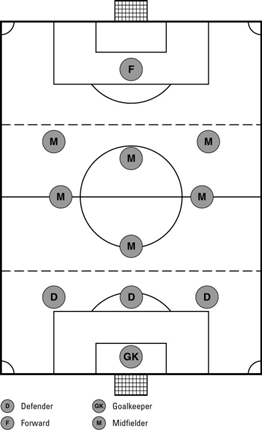 |
Figure 5: The 3-6-1 formation. |
This strategy may be dangerous. Former U.S. national coach Steve Sampson used this formation during the 1998 World Cup and failed miserably. After the team used primarily a 4-4-2 formation, Sampson deployed it some two months before France '98, and it backfired, producing just one goal in three games.
A coach should not change a team's formation drastically during a match, particularly for young or inexperienced teams who may get confused. If a team is trailing and trying to tie up the match, taking out a midfielder for a forward works. If a team is leading, replacing a midfielder with a defender and/or a forward with a midfielder are also proper tactical moves.

